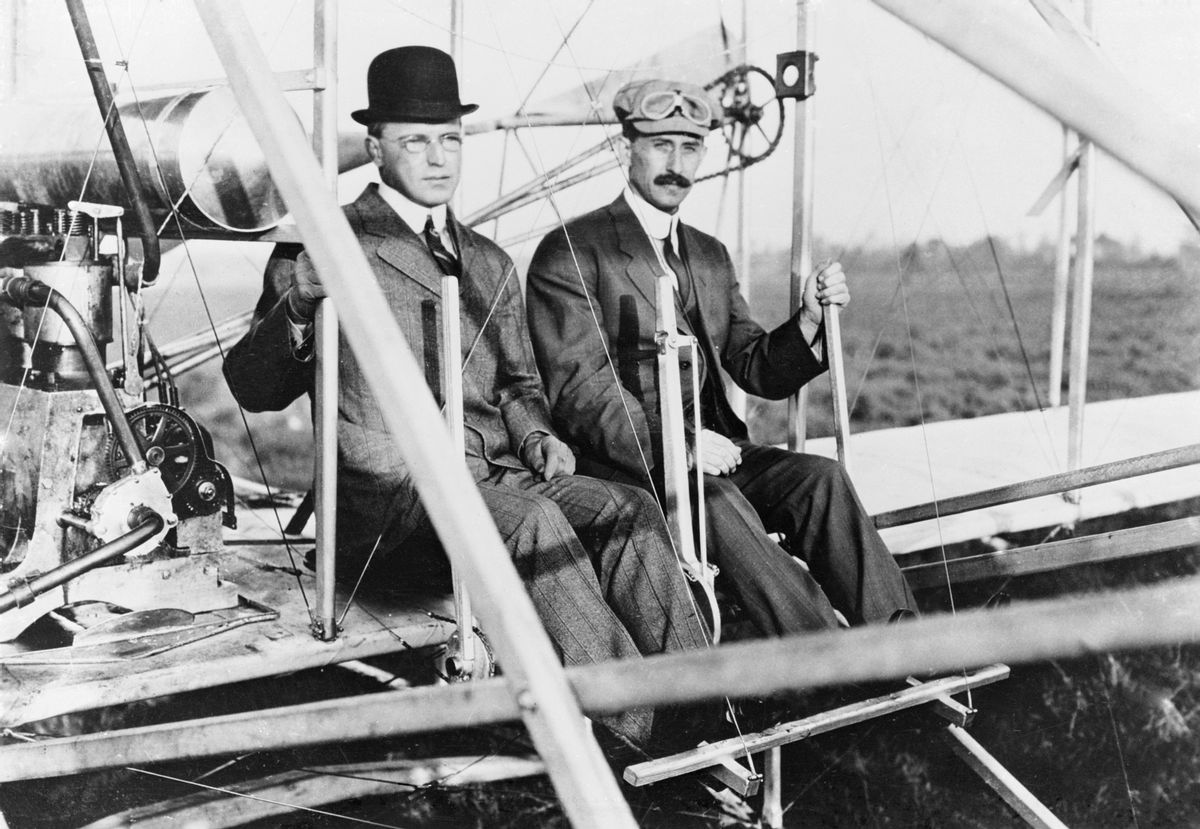For years, social media posts have claimed that the Wright Brothers took flight for the first time the same year The New York Times published an article about it potentially taking 10 million years to develop a successful flying machine. The brothers are credited with inventing the airplane and making the first successful airplane flight in 1903.
The alleged amount of time between the Times article being published and the Wright brothers taking flight varied according to the particular post. The first notable post we found related to the claim was a TikTok video from Sept. 7, 2021. It was posted by Cleo Abram, a video journalist who formerly worked for Vox. As of the date this fact check was published, it had over 100,000 views:
In the video, Abram said two months passed between the article being published and the Wright Brothers' flight.
The topic reappeared in May 2023, when a Twitter post claimed the amount of time between the article being published and the flight was nine days. "An article published by The New York Times dated December 8th, 1903," it said. "9 days later the Wright Brothers had their first flight."
An article published by The New York Times dated December 8th, 1903
9 days later the Wright Brothers had their first flight. pic.twitter.com/U64XJouGcC
— Wall Street Silver (@WallStreetSilv) May 12, 2023
At the time of publication, the tweet — to which Twitter owner Elon Musk replied — had 22,000 likes.
We also found less viral posts making the claim on social media platforms, such as a 2019 Reddit post in the r/todayilearned subreddit. That post claimed the time gap between the article and the flight was one week.
The Times published an editorial article on Oct. 9, 1903, with the headline, "Flying Machines Which Do Not Fly." We found the article using the Times' website's TImesMachine feature, which included page scans of issues from 1851 to 2002. The editorial was published two days after aviation pioneer Samuel P. Langley failed to launch his own airplane on Oct. 7, 1903.
The editorial said:
The machine does only what it must do in obedience to natural laws acting on passive matter. Hence, if it requires, say, a thousand years to fit for easy flight a bird which started with rudimentary wings, or ten thousand for one which started with no wings at all and had to sprout them ab initio, it might be assumed that the flying machine which will really fly might be evolved by the combined and continuous efforts of mathematicians and mechanicians in from one million to ten million years — provided, of course, we can meanwhile eliminate such little drawbacks and embarrassments as the existing relation between weight and strength in inorganic materials. No doubt the problem has attractions for those it interests, but to the ordinary man it would seem as if effort might be employed more profitably.
The Wright brothers took flight on Dec. 17, 1903, 69 days later. According to a 2017 article from The Virginian-Pilot, that newspaper was the first and only one to report what had happened. The article said:
News of the flight was leaked to reporters at The Virginian-Pilot hours after it happened. Pilot newsmen rushed to report the event and the original story published on Dec. 18, 1903, contained many errors.
In 2003, on the anniversary of the flight, The Pilot ran a front page story, correcting many of the errors that appeared in the original story.
According to the 2017 Virginian-Pilot article, some of the errors corrected in the 2003 front-page Virginian-Pilot article included information about who flew the plane. The original 1903 article said Wilbur Wright flew the plane, that he was the chief inventor of the machine, and that he had "raven-hued hair and deep blue eyes." In truth, Orville Wright flew the plane, and he didn't have "raven-hued hair or deep blue eyes." The brothers said they were equal inventors of the machine.
As the Wright brothers took flight on Dec. 17, 1903, 69 days after the New York Times published an editorial about it potentially taking 10 million years to develop a successful flying machine, we found the claim True.

